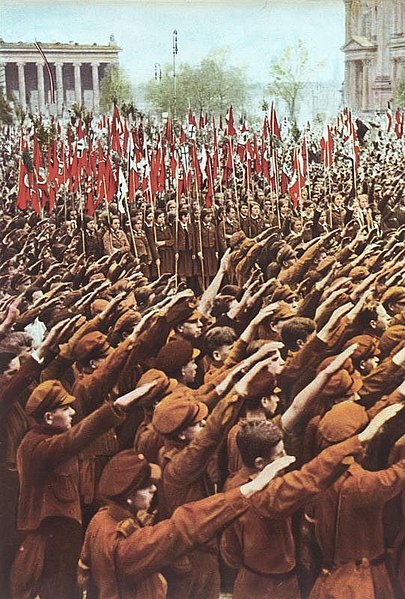The Nazi salute, also known as the Hitler salute, or the Sieg Heil salute, is a gesture that was used as a greeting in Nazi Germany. The salute is performed by extending the right arm from the shoulder into the air with a straightened hand. Usually, the person offering the salute would say "Heil Hitler!", "Heil, mein Führer!", or "Sieg Heil!". It was officially adopted by the Nazi Party in 1926, although it had been used within the party as early as 1921, to signal obedience to the party's leader, Adolf Hitler, and to glorify the German nation. The salute was mandatory for civilians but mostly optional for military personnel, who retained a traditional military salute until the failed assassination attempt on Hitler on 20 July 1944.
Members of the Hitler Youth in Berlin performing the Nazi salute at a rally in 1933
People performing the Nazi salute at the Harzburg Front rally in Bad Harzburg, October 1931
Hitler used to answer the common salute with his modified version, where his palm was parallel to the sky.
Hitler and Hermann Göring (first row left) saluting at a 1928 Nazi Party rally in Nuremberg
The Wehrmacht were the unified armed forces of Nazi Germany from 1935 to 1945. It consisted of the Heer (army), the Kriegsmarine (navy) and the Luftwaffe. The designation "Wehrmacht" replaced the previously used term Reichswehr and was the manifestation of the Nazi regime's efforts to rearm Germany to a greater extent than the Treaty of Versailles permitted.
Reichswehr soldiers swearing the Hitler oath in August 1934
Inspection of German conscripts
An Afro-Arab soldier of the Free Arabian Legion
Wehrmachthelferinnen in occupied Paris, 1940








